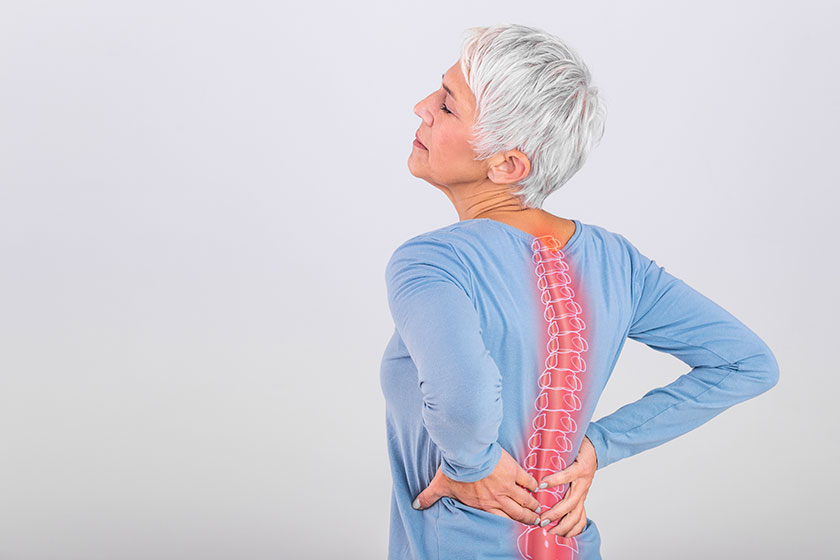Scoliosis, a condition characterized by an abnormal lateral curvature of the spine, is not just a concern for the young. It can significantly affect the elderly, impacting their quality of life in their later years. Recognizing the signs of scoliosis in the elderly is crucial for early intervention, which can help manage symptoms and improve overall well-being. This awareness is especially important for friends, family members, and caregivers who interact with individuals in old age, as they are in a position to notice subtle changes and advocate for necessary evaluations and interventions. Here are key signs of scoliosis in the elderly that should not be overlooked.
Visible Changes in Posture
A prominent sign of scoliosis in the elderly that demands immediate attention is a visible alteration in posture. This condition may manifest through a variety of symptoms, such as a noticeable lean to one side, uneven shoulder heights where one may appear significantly higher than the other, or a pronounced hump on one side of the back. These physical signs are crucial indicators of the presence of scoliosis and can often be detected by those who interact closely with aging individuals.
Over time, these postural changes may become more evident, highlighting the progressive nature of scoliosis. It’s important for loved ones to be observant of these changes, as early detection is key to managing the condition effectively. Regular monitoring and reporting of such postural deviations can lead to timely medical assessments and interventions, thereby mitigating the risk of further complications associated with scoliosis in the elderly.
Uneven Gait or Walking Difficulties
Scoliosis can significantly impact an individual’s balance and mobility, leading to an uneven gait or walking difficulties. In the elderly, these issues may start as subtle inconsistencies in how they walk, which can gradually evolve into more pronounced difficulties with balance and an increased risk of falls. Such changes in mobility are critical to recognize, as they directly affect an individual’s independence and overall quality of life. Family members and caregivers play a crucial role in spotting these early signs, as changes in an elderly’s walking pattern might not always be immediately apparent to the individual themselves.
Observations of any new or worsening difficulties in movement should prompt a thorough evaluation to determine if scoliosis or another underlying health issue could be the cause. Addressing these symptoms early can lead to interventions that significantly improve mobility and reduce the risk of injury, making vigilant observation and reporting essential in the care of elderly individuals.
Reduced Flexibility or Range of Motion
An often-overlooked sign of scoliosis in the elderly is a reduction in spinal flexibility or range of motion. This can manifest as difficulty bending, twisting, or turning the body in ways that were previously easy. Residents might express discomfort or inability to perform certain movements, which should prompt further investigation into the possible presence of scoliosis.
Pain in the Back or Other Areas
While not all cases of scoliosis in the elderly are painful, many individuals experience discomfort or pain in their back, which can also radiate to other areas such as the legs. This pain may be due to the abnormal spinal curvature putting pressure on nerves or straining muscles. It’s important for caregivers and loved ones to take complaints of new or worsening back pain seriously, as this could be a sign of scoliosis or another underlying condition.
Difficulty with Daily Activities
As scoliosis progresses, it can make daily activities increasingly challenging. This includes tasks such as dressing, bathing, or even sitting for extended periods. Older adults may need more assistance from family members or may avoid certain activities altogether. Noticing these changes in behavior and capability can be crucial in identifying the impact of scoliosis on a elderly’s daily life.
Changes in Breathing or Cardiovascular Symptoms
In severe cases, the curvature of the spine can affect the chest and abdominal area, potentially leading to breathing difficulties or cardiovascular symptoms. This might include shortness of breath, especially with activity, or a feeling of tightness in the chest. Such symptoms should prompt immediate medical evaluation to determine the cause and extent of the impact on the elderly’s health.
Identifying scoliosis in the elderly requires attentiveness to the subtle changes in the individual’s posture, mobility, flexibility, and overall well-being. Early detection and intervention can significantly improve the quality of life for those living with this condition in old age. It is vital for caregivers and family members to be knowledgeable about these signs and to advocate for the health and care of the affected elderly. By working together, the whole team can ensure that those affected by scoliosis receive the support and treatment they need to live comfortably and with dignity.







